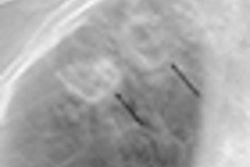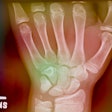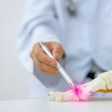Dear Digital X-Ray Insider,
The growing debate over rising medical radiation exposure has many radiologists looking for alternatives to imaging modalities like CT and its relatively high radiation dose. Radiography is an inexpensive technology with extremely low dose, but its poor spatial resolution relative to CT means that radiologists can't rely on it for a definitive diagnosis for most clinical conditions.
That could be starting to change, however, with the maturation of three new technological innovations in digital x-ray: dual-energy imaging, computer-aided detection, and digital tomosynthesis. Each of these technologies offers the potential of improving digital x-ray's performance to the point where it might present an alternative to CT.
We're examining this question in a two-part series by contributing writer James Brice, with the first installment available to you as a Digital X-Ray Insider Exclusive before the rest of the AuntMinnie.com membership can read it. Click here to get started.
In other news in the Digital X-Ray Community, we examine a new low-dose tomosynthesis protocol developed by researchers from South Korea. They tested it in a small patient population with tuberculosis-related lung abnormalities -- find out how it performed by clicking here.
Regarding radiation dose, if you haven't yet read our coverage of last month's Congressional hearings on medical radiation dose, this could be a good time to catch up. Associate editor Cynthia E. Keen followed the proceedings with two articles, which you can read by clicking here and here.
Finally, read about new guidelines designed to help interventional radiologists report on fluoroscopy-induced skin injury.



















